The Swede Life
In Stockholm, sustainability and conscious sourcing are foundational values to a culture that embraces creativity, coziness and contentment.
Words and photography by KATRINA FREDERICK
As a first-time visitor to Sweden from a country that doesn’t rank in the top of the world’s lists for safety, gender equality, or happiness, it’s the little things that tend to creep around in the back of your mind. Is it too organized with its wide, clean streets and people breaking for fika every few hours? Too idyllic with innumerable tiny blonde children playing in parks and purple heather exploding from every corner? Or did they just, you know, figure it out? I find it’s a little like Scrooge peering into Tiny Tim’s window on Christmas day (minus the whole crippling sickness thing)—trying to decode what it’s all about, curious about the happiness just beyond one’s reach— thawing my cold, skeptical heart, and transforming me into a believer.
Stockholm’s food scene reflects what Sweden does best: modern design, order, and sustainability, with a little coziness thrown in. But this wasn’t always the case. Magnus Johansson, chef at Hotel Skeppsholmen, explains that for years, as far back as World War II, chefs looked outside of Scandinavia for inspiration. Influenced by the legends of France, and later, world-renowned powerhouses like Ferran Adria’s El Bulli in Spain, Sweden’s best restaurants stuck to global trends. Finally, Johansson feels, a new generation of Swedish chefs is realizing the value of what is right at home, and is responsible for rebuilding the country’s brand. They are cooking native foods, experimenting with local ingredients, and reimagining the cuisine of their ancestors. Diners are elevating homegrown chefs to star status, discussing their rise and accomplishments, proudly displaying cookbooks by the world-renowned likes of Magnus Nilsson and Marcus Samuelsson.
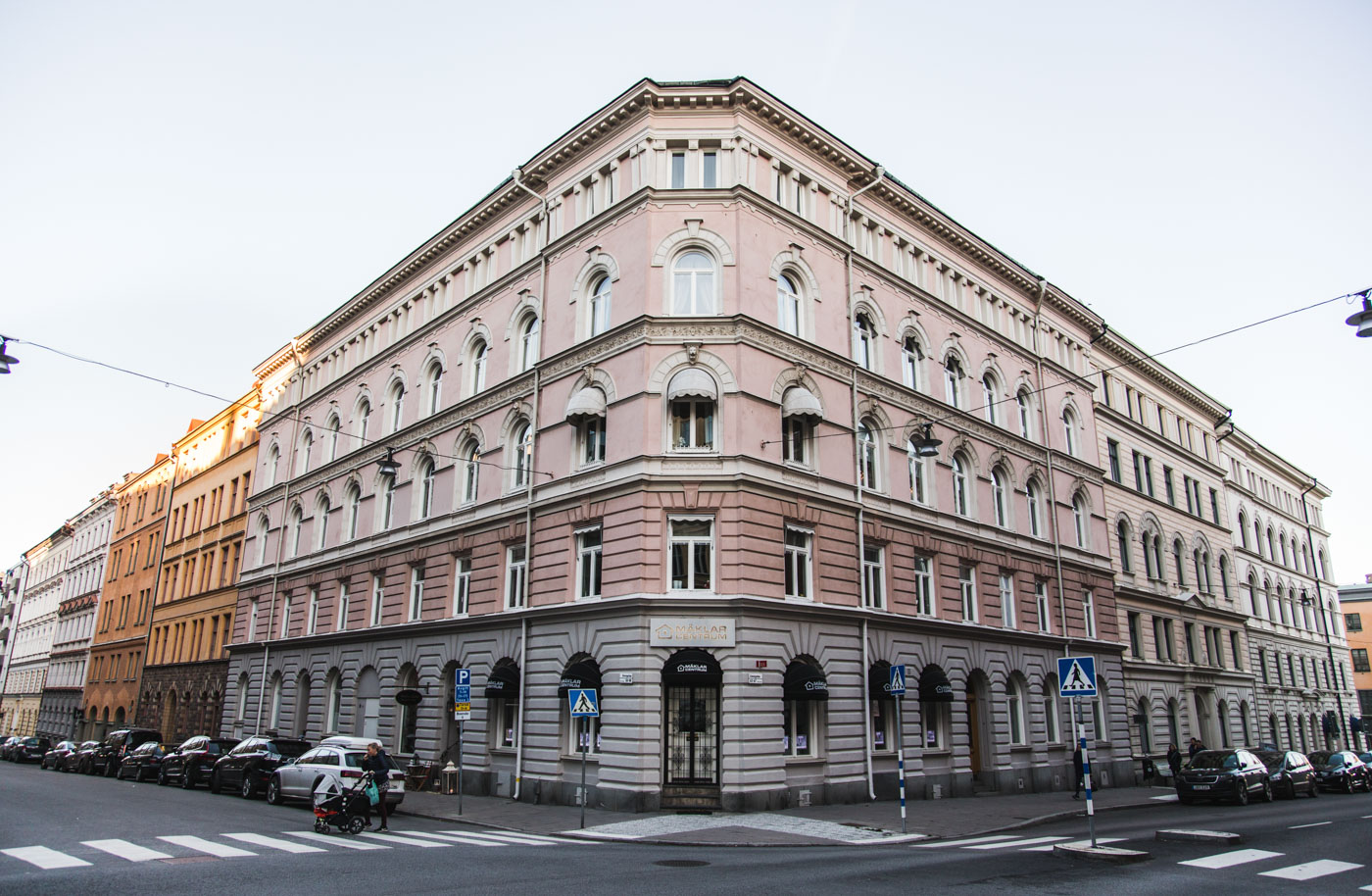
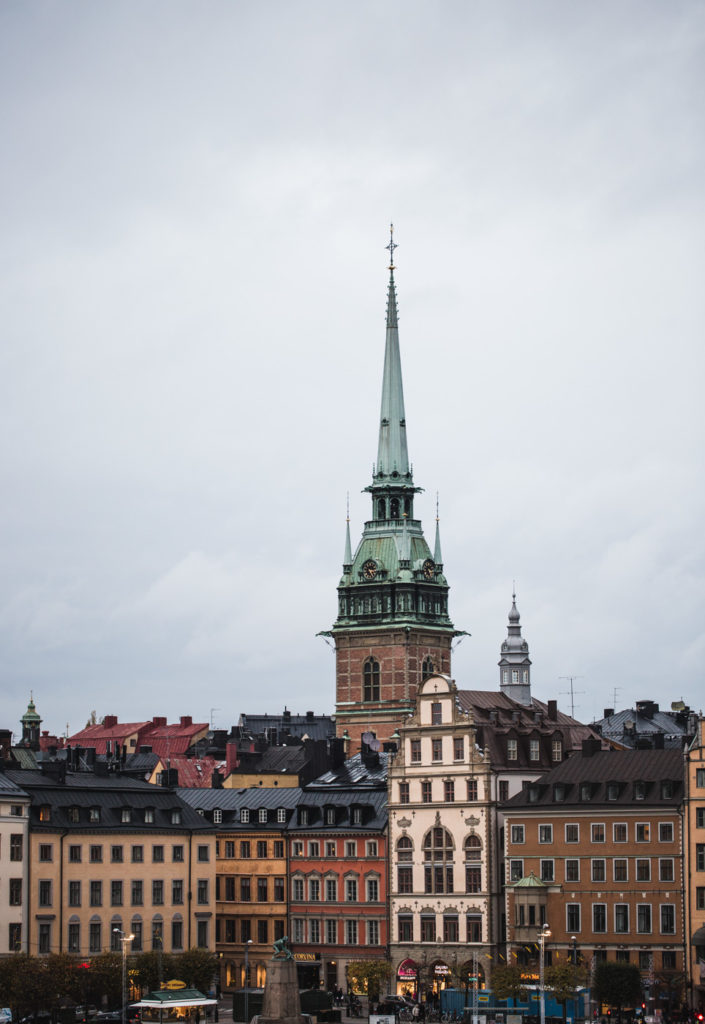
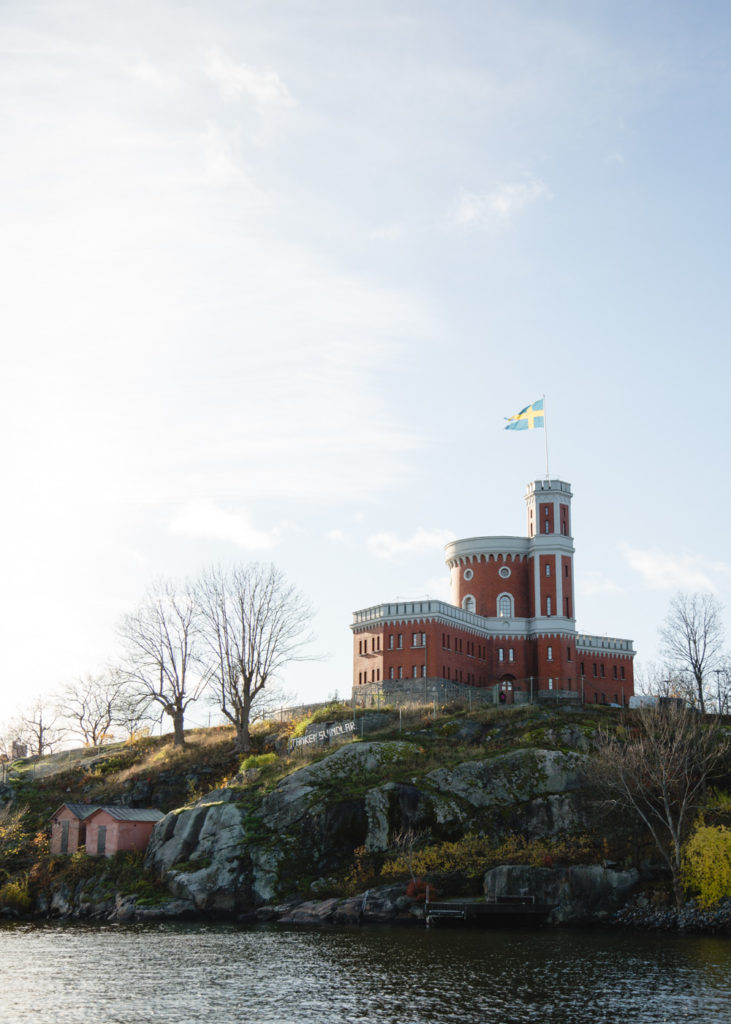
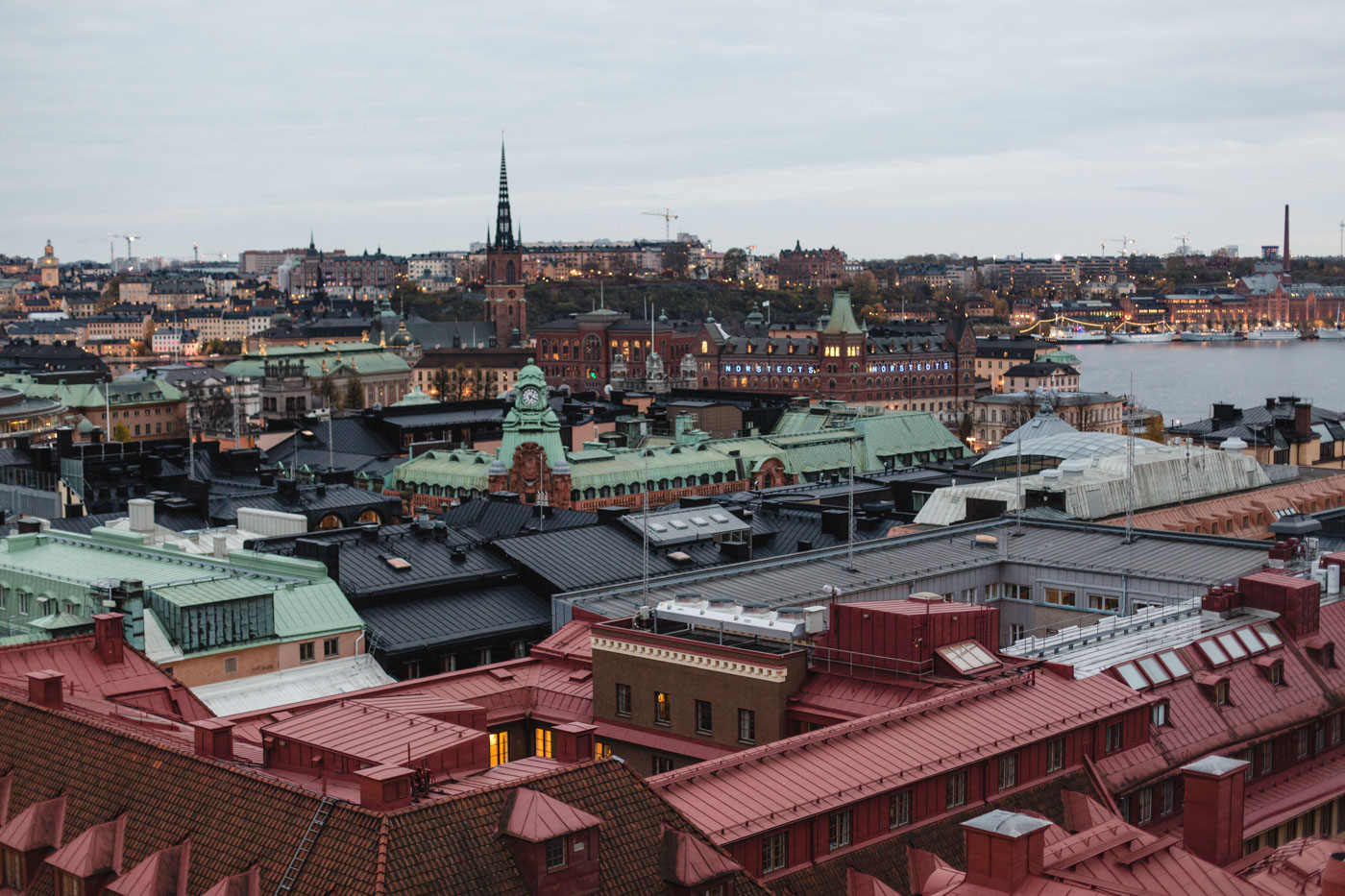
This introspection accompanies a larger conversation about the impact their cooking has on the environment and the communities the land feeds. I’m introduced to the Swedish philosophy of lagom—roughly translating to “not too little, not too much”—a beautifully simple articulation of the fundamental core value of sustainability. Conscious consumption dictates not taking away what can’t be replenished. That balance applies to all corners of life in Stockholm—impeccable design feeds creative minds, ample vacation time allows for more moments with friends and family, and responsible eating forecasts a healthier ecosystem and preservation of heritage for generations to follow.
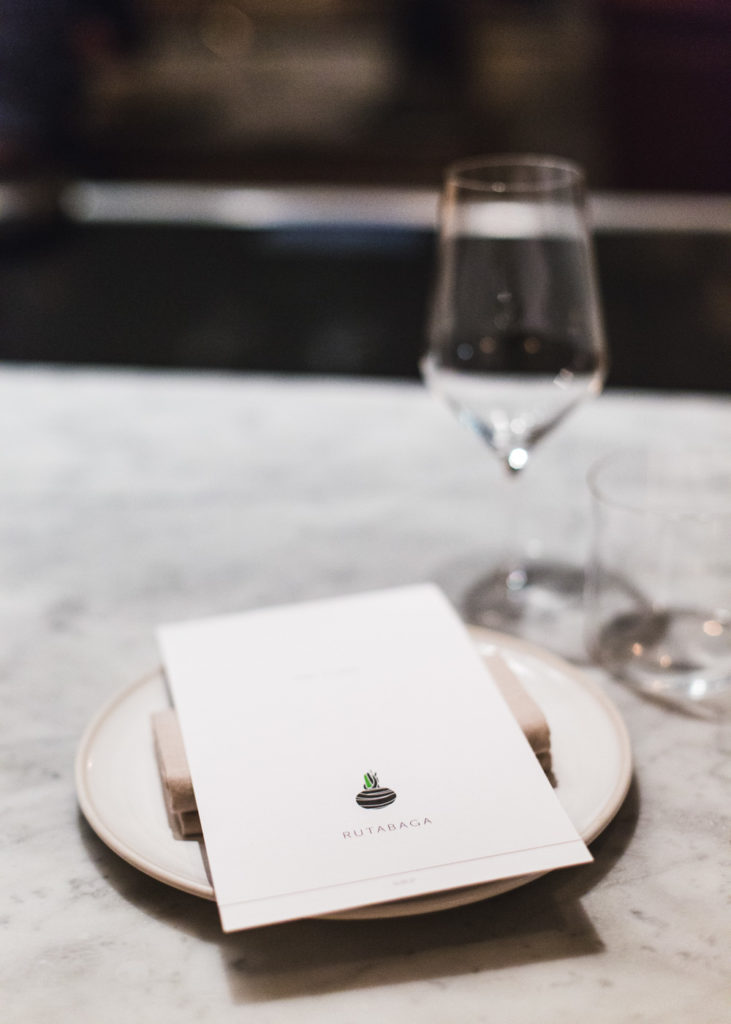
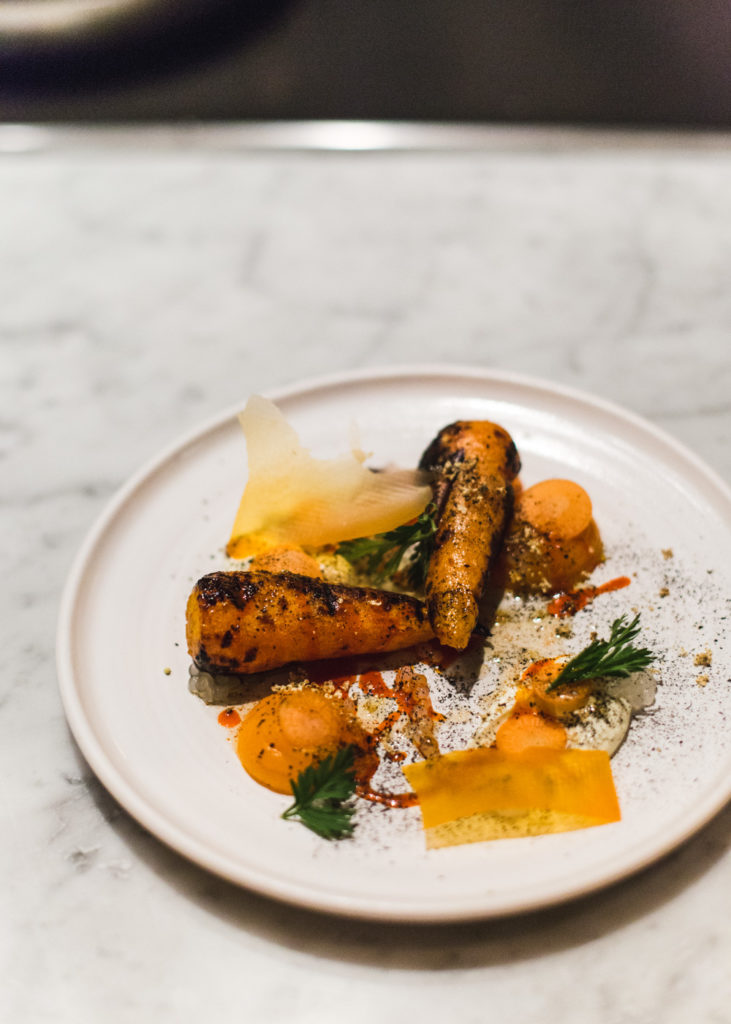
RUTABAGA
Södra Blasieholmshamnen 6
103 27 Stockholm, Sweden
Among this oasis of fiddle leaf fig trees and white paneled walls, a saffron and bourbon cocktail lands at my seat, luring me from my jet lag. The jolt of liquor and a plate of palate-stimulating pickled cauliflower writes the exciting prologue for the chapters of verdure to follow.
Chef Mathias Dahlgren traded in two Michelin stars to open this vegetarian gem, housed in the palatial Grand Hotel. As an answer to the meat-lover’s raised eyebrow, the umami handbook is thrown at the menu—this includes sauces enriched with butter, liberal applications of smoking, mushrooms, and mounds of fragrant, freshly shaved truffles.
Dahlgren is just one of many chefs now approaching food with a focus on availability and connecting the dots between farmer and environmental impact. From behind a curtain of sizzle and steam, a cook explains Rutabaga’s seasonal dependence—even when it proves to be a subpar growing year. Due to early rains and a longer winter, spring produce didn’t arrive until much later than usual, and the asparagus crop was lost entirely. Such is the rollercoaster of a changing climate, but one we all must ride to continue on a path to sustainability.

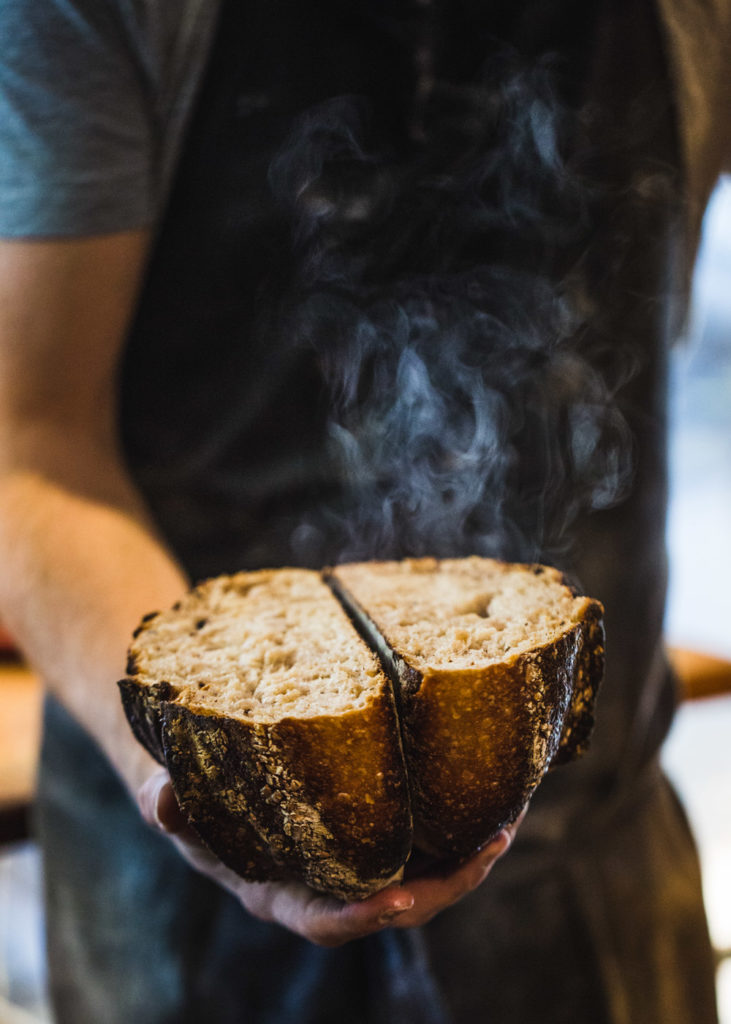
BAGERI PETRUS
Swedenborgsgatan 4B
118 48 Stockholm, Sweden
“Every morning, I almost run here,” admits Petrus Jakobsson, owner of his eponymous bakery. As if his giant smile wasn’t enough proof of his passion, his favorite pastries are tattooed on his arms—a croissant adorns his right tricep and an elaborate semla (“the queen of Swedish pastries,” adds Jakobsson)—peeks out from under his left sleeve. However much he loves beginning each day and sweating behind the oven, Jakobsson observes the very Swedish belief of having a healthy work-life balance, closing his bakery on Sundays and coming to work at reasonable hours.
Even the loaves of bread are delightfully unstressed, allowed plenty of time to develop their complex flavor and crunch. Made with flour milled specially for the bakery, the bread dough is proofed for up to twenty-eight hours for the perfect final texture. As a visitor, the only pressure comes when choosing from the rows of sweet treats. Will it be the scratch-made traditional shortbread with almond paste, or the Portuguese custard tarts with ginger and apple? My winner, the softest cardamom buns—kardemummabulle—strike that hardly attainable balance between spicy and sweet. Made with spelt flour and a generous injection of cardamom and cinnamon, the crunch of sugar crystals against warm folded dough fills a need I never knew I had, and will trigger an ache in my food memory forevermore.
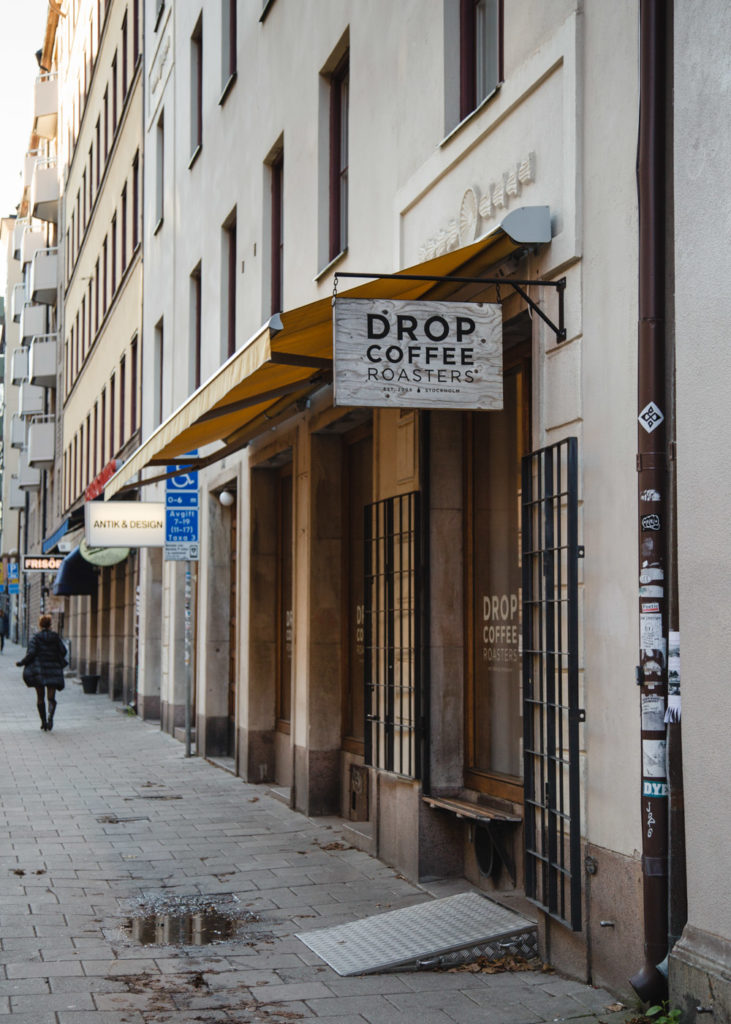
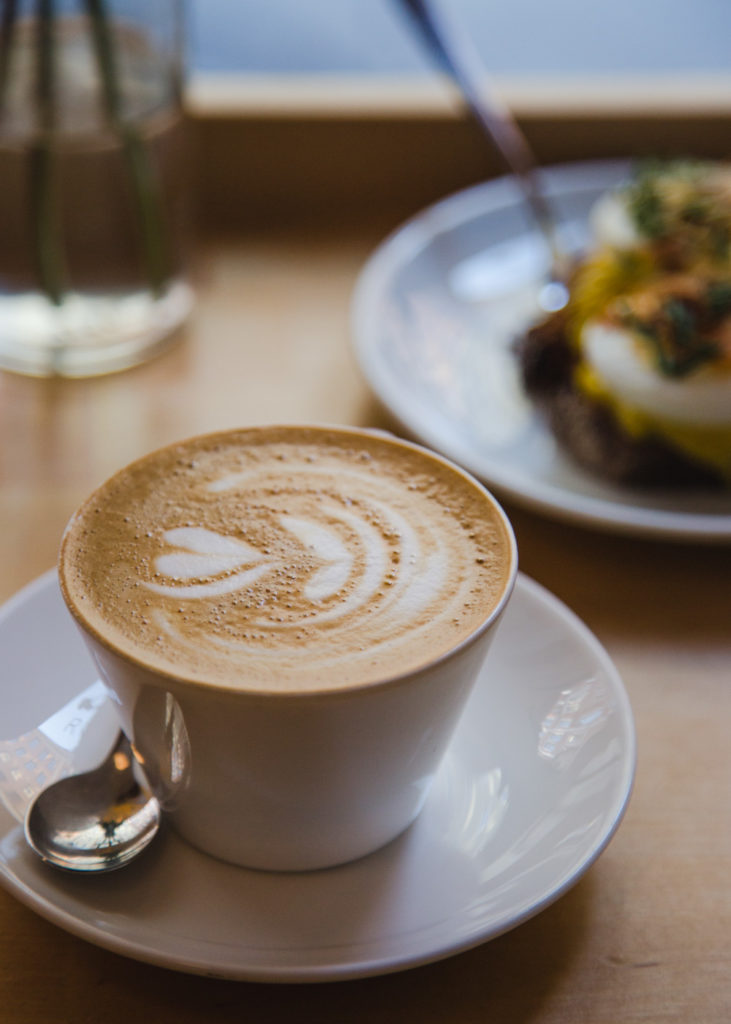
DROP COFFEE
Wollmar Yxkullsgatan 10
118 50 Stockholm, Sweden
When the breeze is biting, and fingers are in need of something warm to hold, a hot cup of coffee is second only to a whiskey and mulled cider by the fire. And since the Swedes frown upon overconsumption of alcohol and daytime hard liquor, we will happily settle for a mug of caffeine.
In a country renowned for its coffee consumption (a per capita amount ranking sixth in the world), Drop Coffee stands out as some of the best brew and espresso. They’ve been pouring for nine years, roasting for eight, expanding from a tiny hole-in-the-wall space near Mariatorget Park to take over the storefront next door. While coffee plants do not grow in this part of the world, Drop Coffee makes efforts to be in touch with their product. They visit each farm to approve the bean growing and washing processes, monitor their workers’ quality of life, and give their stamp of approval.
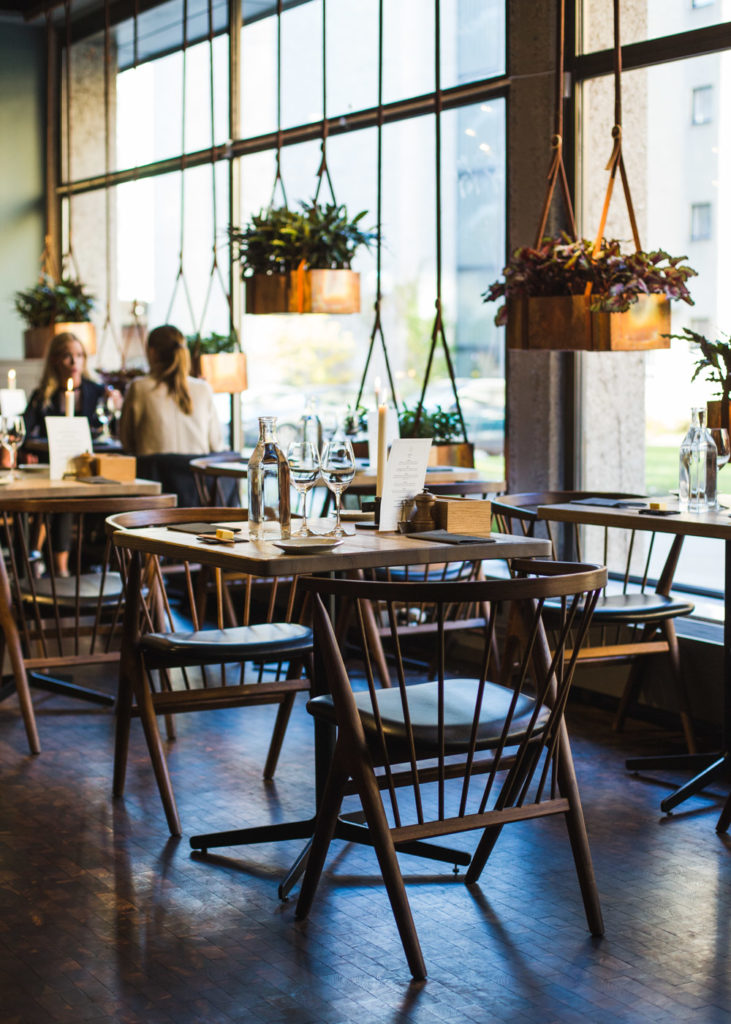
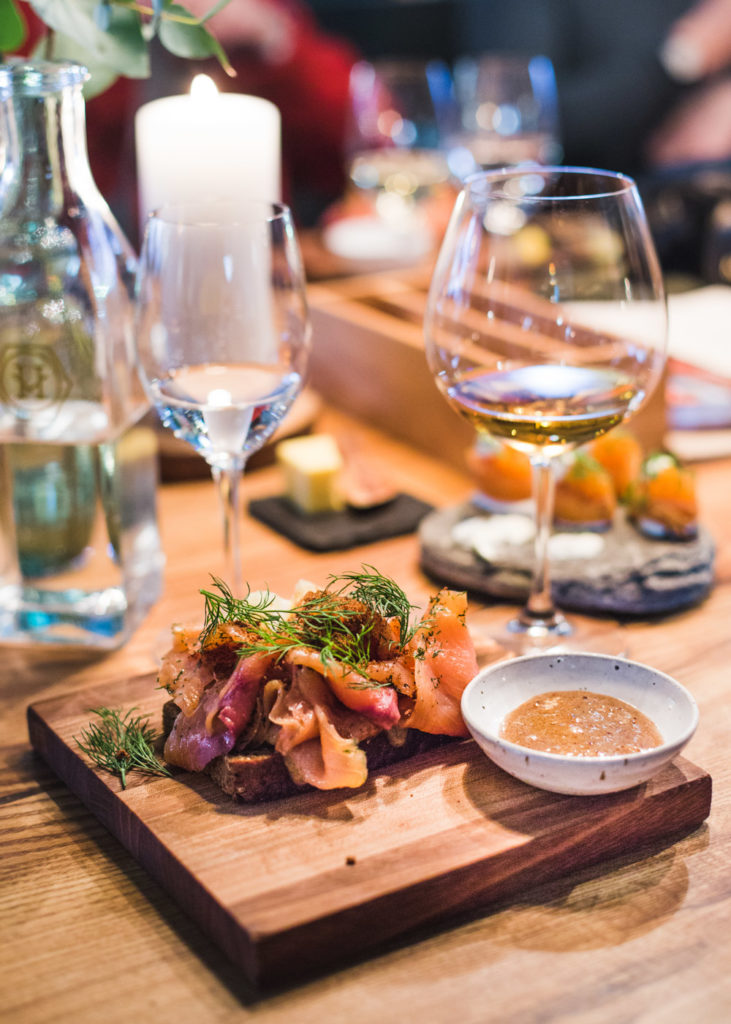
HANTVERKET
Sturegatan 15a
114 36 Stockholm, Sweden
How can you not love a restaurant that proudly displays a giant photograph of a pile of grey hair? The quirky artwork of Hantverket doesn’t quite reflect the menu, which provides delicious updates on Swedish classics. Located in the upscale neighborhood of Östermalm, businessmen and women, shoppers, and foodies alike come to lunch on mounds of soft-cured salmon over thick, caraway-speckled rye slathered in sweet mustard sauce. Hasselback potatoes—bite-sized spuds sliced into thin layers and baked to a crisp, named after a Stockholm restaurant that served them in the 1950s—come topped with vibrant orange bleak roe, or löjrom, harvested in Bothnian Bay in the northern part of the Baltic Sea. In the case of a forgotten winter parka, a towering “pudding” layered with salmon, potato, egg and brown butter helps pack on warmth while still leaving (enviable) leftovers for lunch the next day.
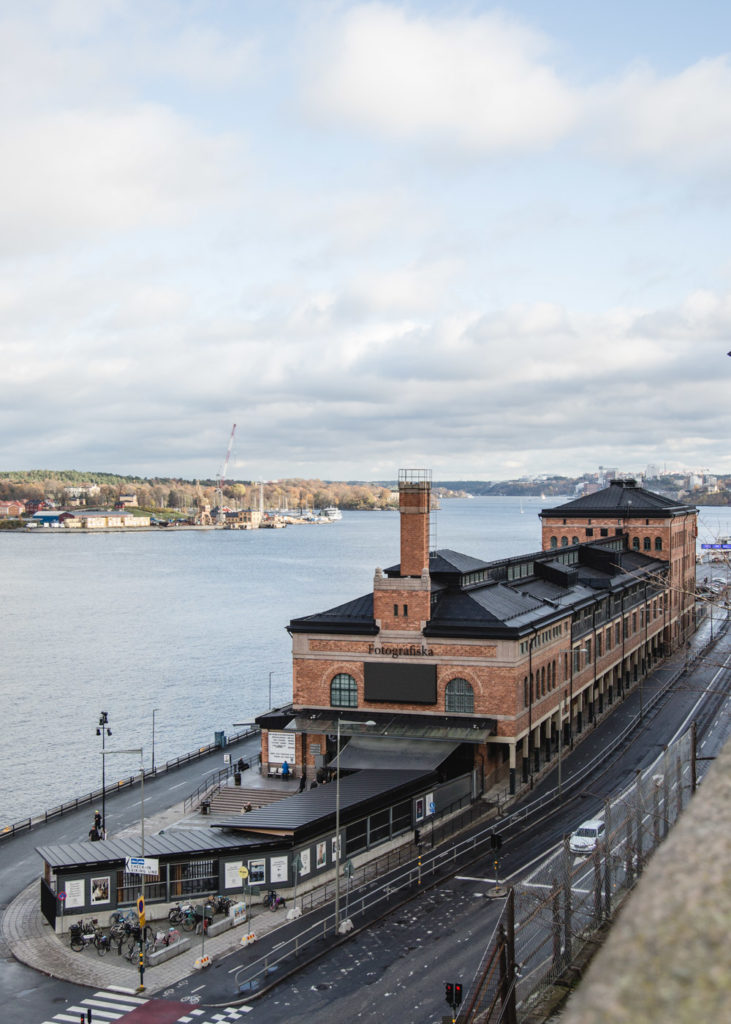
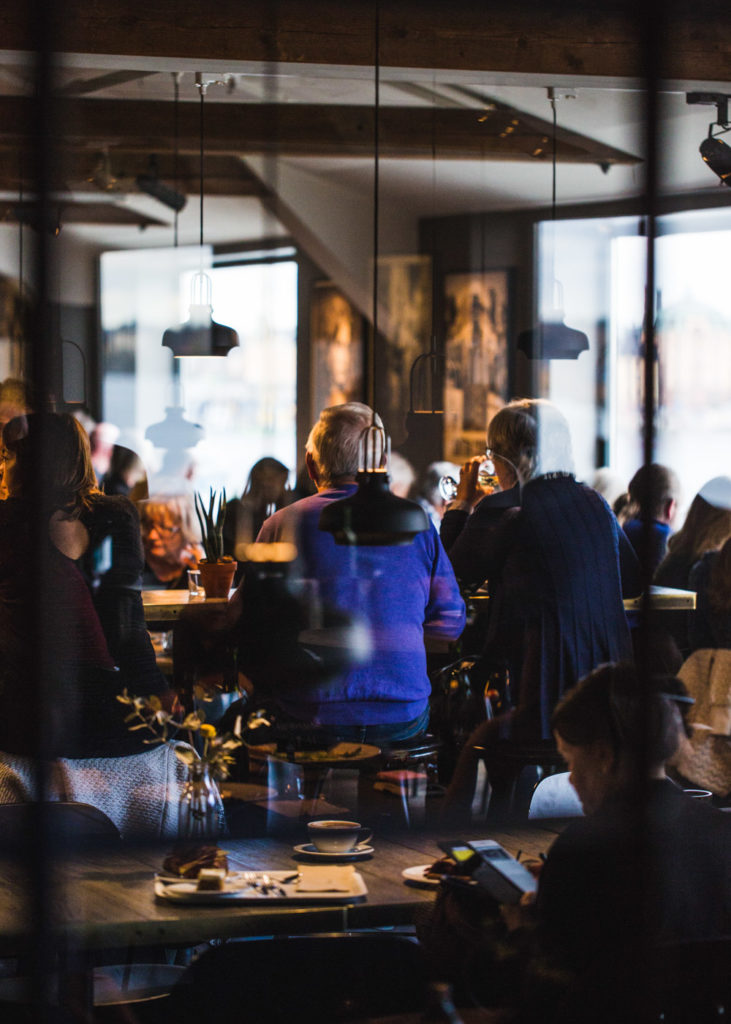
FOTOGRAFISKA RESTAURANT
Stadsgårdshamnen 22
116 45 Stockholm, Sweden
The view from the top floor of the Fotografiska photography museum is twofold. On one side, large windows capture the serene Saltsjön Bay, stirring with lazy ferries and reflecting distant twirling rides at Gröna Lund—the city’s nineteenth-century amusement park. On the other, seductive veggie-centric dishes and flurries of kitchen activity are the only comparable lure to the mid-day sunset. In the large open kitchen, something is being prepared at any given moment—either slowly, like the kombucha fermenting in a large cloth-covered glass jar, or immediately, like the apple tarts caramelizing under the fire of a hand torch.
Fotografiska’s all-day restaurant-café-bar challenges the idea of what a museum restaurant can be. Rather than filling a brief break between galleries, providing the bare minimum quality to a built-in audience, Chef Paul Svensson reimagines the space as a destination in its own right, and an inspiration for forward-thinking culinary practices that match the innovative exhibitions.
Chalk boards above food stations champion their commitment to zero waste. A sketch of the country maps each ingredient’s origin and explains how fish is sourced from a single local, emission-free farm devoted to sustainable aquaculture. In addition to composting coffee grounds and leftovers, the restaurant encourages diners to only load their plates with what they think they will consume—a feat considering how enticing everything looks.
Fotografiska’s vision of a more conscious art experience extends beyond Scandinavia, as the museum and restaurant prepare to open similar concepts in London and New York City in 2018.
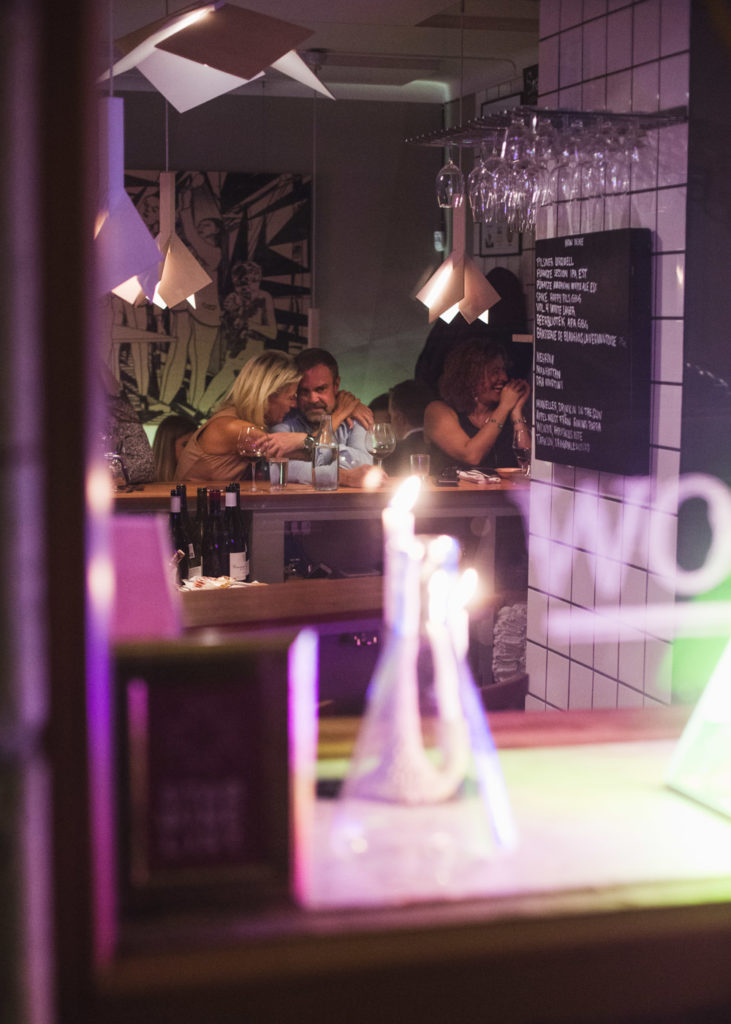
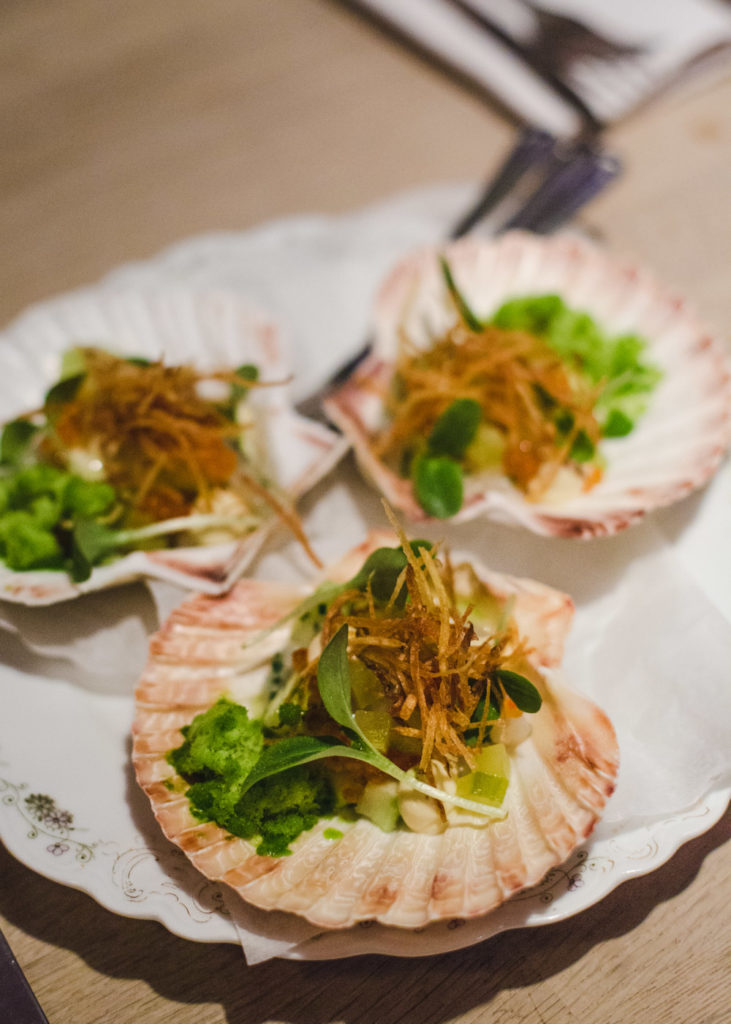
WOODSTOCKHOLM
Mosebacke Torg 9
116 46 Stockholm, Sweden
In a city with the most coat hooks I’ve seen in my life, the routine bustle of attaching and removing heavy winter jackets—often over people’s heads or grazing their shoulders—incurs friendly apologetic smiles and polite banter among strangers. This scene plays out especially in the packed, elbow-room only Woodstockholm. Tucked in a quiet square just outside of the old town, windows displaying Pink Floyd prisms of neon light offer a glimpse into the restaurant’s young, fun and somewhat rebellious cuisine.
Each version of the menu follows a theme chosen by the owners, and can be as abstract as “Aphrodisiac.” The theme when I visit comprises of crowd pleasers from previous themes—a “Greatest Hits” compilation. From the former, a dish of scallop, oyster mayo, and cucumber is meant to enticingly allude to the birth of Aphrodite as she rides her shell out of the sea foam. Following the Botticelli-esque creation, a dark, rich, and surprisingly vegetarian onion soup inspired by Julia Child pours table side. The wine list is also full of surprises; my inventive meal is accompanied by an equally memorable drinking moment—my very first taste of a foot-pressed red.
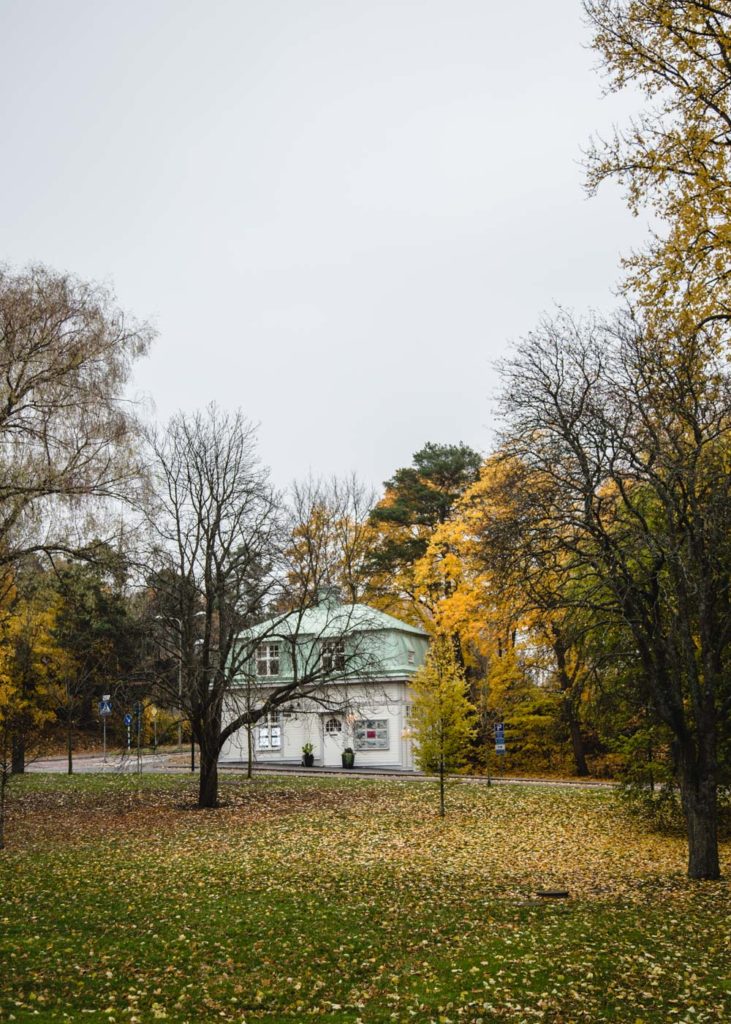
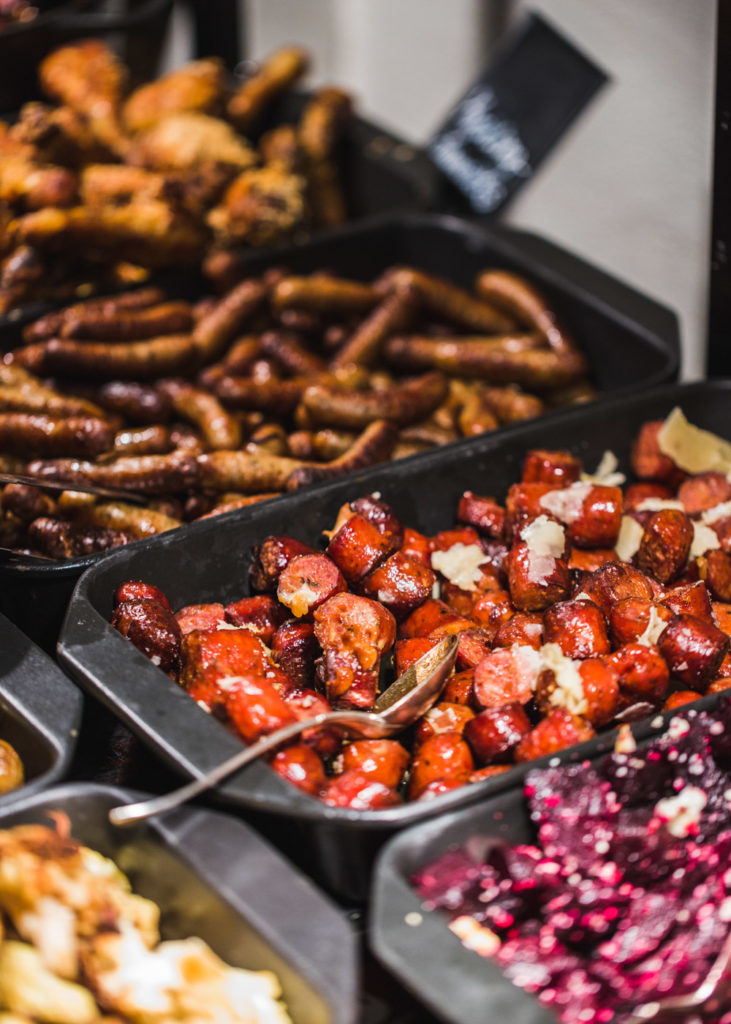
LÅNGBRO VÄRDSHUS
Stora Mans Väg 4
125 59 Älvsjö, Sweden
Housed in an elegant old inn, removed from the city without being far out of reach, Långbro Värdshus banishes any fear of the dreaded phrase, buffet brunch. Chef Fredrik Eriksson displays a bounty of hot and cold dishes: tables laden with pale pink poached salmon, shaved zucchini with olive caper relish, squares of glistening crackly-edged pork belly, and mini crème brûlée tarts.
In case you’re sensing a theme across these Scandinavian establishments, yes, everything is homemade and draws from local flavors, from the blackberry jam to the three preparations of herring (pickled, mustard sauced, and fried).
I’d quickly make Långbro Värdshus the setting for long, relaxing meals shared with loved ones in various combinations—a reunion with Grandma, a catch-up with the folks, a pleasant chat with in-laws. And it seems most there think along the same lines, as families and diners of all ages line up for seconds and thirds. The Swedish royal couple seems to approve as well—a framed thank you note to the chef from Prince Carl Philip and Sofia Hellqvist hangs above the coffee bar.
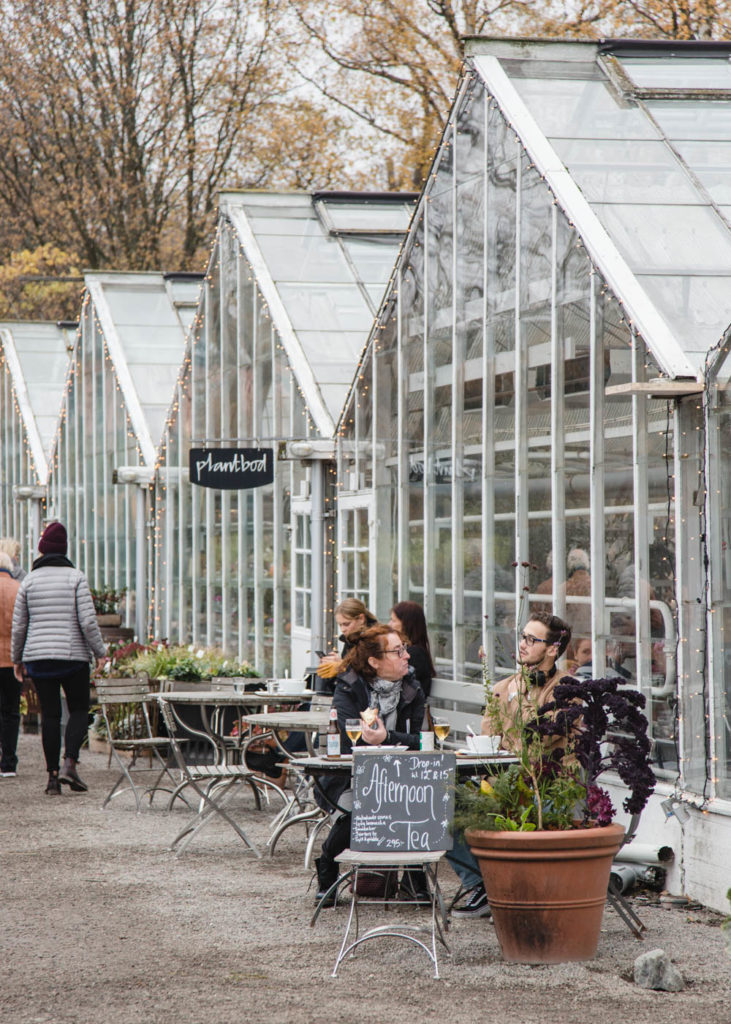
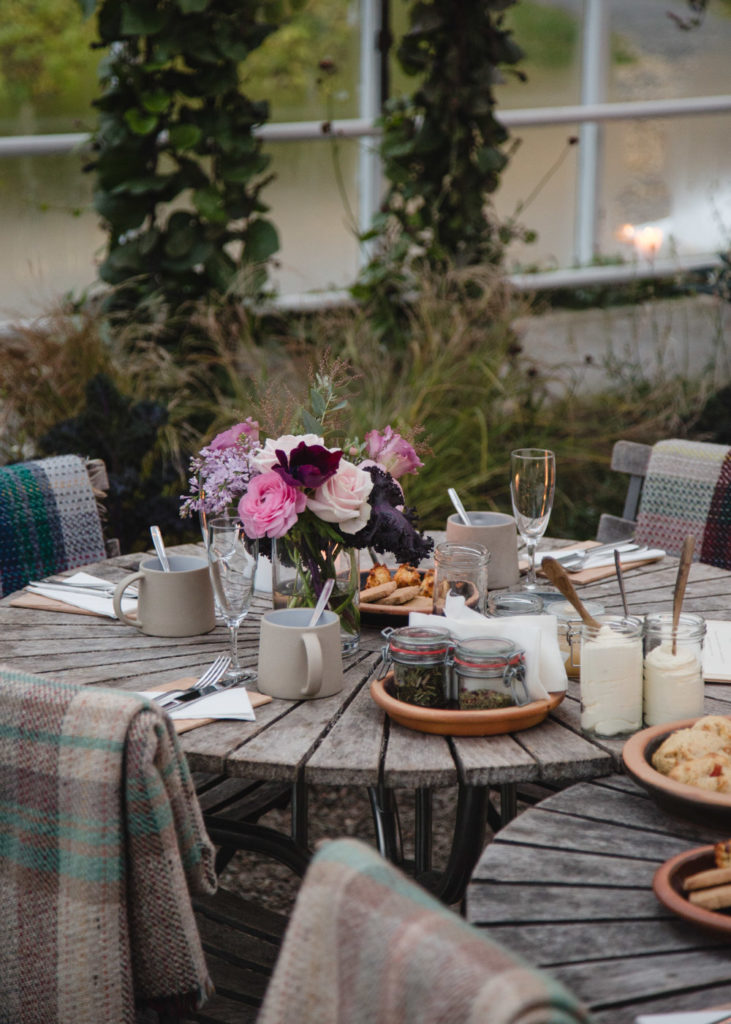
ROSENDALS TRÄDGÅRD
Rosendalsvägen 38
115 21 Stockholm, Sweden
The island of Djugården has a poorly kept secret. At the heart of the old royal hunting grounds lies a heavenly farm and a vertically integrated food system. At Rosendals Trädgård, the herbs, fruits and vegetables grown in a biodynamic garden wind their way into every meal served at the café and restaurant, and their flowers and homemade jams sell in their shop—all sheltered under inviting glass greenhouse roofs. The restaurant encourages diners to participate in the natural cycle of the land, asking that uneaten food be added to the large compost pile in the center of the garden. According to Victoria Lagne, the communications director for Rosendals, the compost heap is meant to be visible to all, because it forms the backbone of all activity at the garden. Compost is later used on the 120-strong varieties of flowers and plants, and is traded for fertilizing manure from the animals at the nearby cultural heritage center.
Sitting for afternoon tea at Rosendals and enjoying the moment, I’m already scheming how to stay longer—or at least planning when to come back. The oh-so-dreamy scene—sun setting, the steam creeping up the windows, enclosing diners in a frosted greenhouse, candles and twinkle lights glowing from every corner, vines trailing over antique store finds, and plaid blankets draped over chair-backs providing extra warmth when needed. A fragrant selection of loose leaf teas accompanies a paradise of nibbles—pots of honey from their resident hives, cloudy fresh apple juice straight from their 150-year-old apple orchard, rye breads, macaroons, and crumbly scones baked that morning in their onsite ovens. Outside, Elsa the cat stalks the potted cabbages while inside, Joni Mitchell sets the mood. Do I sound nostalgic? I am. Take me back.
Editor’s Note: This story was made possible through the support and collaboration of Visit Stockholm and Visit Sweden.






Our comments section is for members only.
Join today to gain exclusive access.